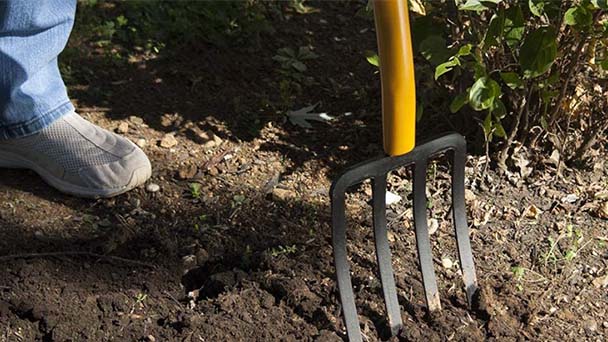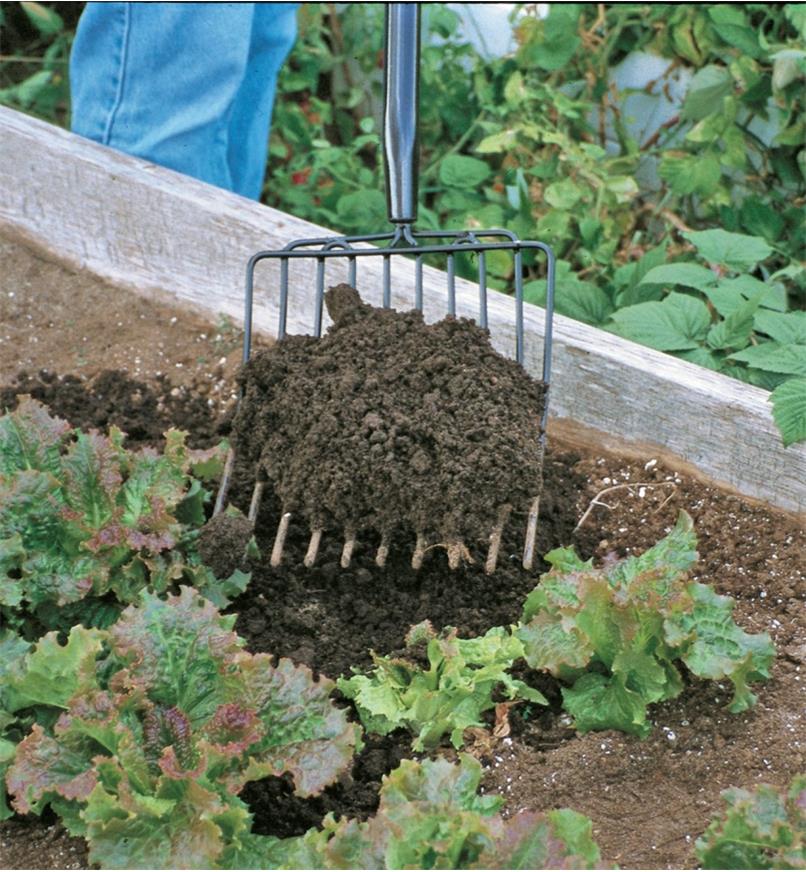The introduction of the compost fork
Written by Joy
Sep 29 2020

Compost forks are also called manure forks. As the name shows, the compost fork is a garden digging tool specially designed for garden fertilizer. The compost, fertilizer and mulch in the garden are actually kind of rotten organic matter, they are very conducive to the growth of garden plants. The compost fork is often used by gardeners as fertilizer for plant growth. However, as we all know, if we only apply compost to the garden soil and don't turn it often, such fertilizers will not absorb the soil. But if it is turned over frequently, the effect of composting will be faster. Gardeners use compost forks to loosen, aerate and transplant compost or fertilizer. This article mainly introduces the composition of the compost fork, hoping it will help you to some extent.
More tines means less space. This is the best choice to disperse the compost, because such a compost fork is less likely to be stuck by objects and affect its work efficiency.
The wider top of the composting fork is easy to pick up rocks and scattered materials. However, for those relatively coarse compost and waste, it is recommended to have fewer forks and wider forks to increase the gap between the forks.
The shape of the handle of the compost fork can be D-shaped or T-shaped. The soft and comfortable handle can reduce the fatigue of gardeners during excavation work. For those gardeners whose hands are relatively large and difficult to hold the D-handle, experts suggest that the T-handle is a good choice. It is worth mentioning that the width of the handle can also be adjusted and changed appropriately according to the gardener's preference and comfort.
Sharp teeth of the compost fork
The compost fork has four widely spaced tines and a curved shape, which makes it easy to scoop up compost and fertilizer. Part of the composting fork has four long tines, through which the fork can push the spoiled compost. Of course, it is also a good choice to choose tines with a larger spacing in order to avoid the larger compost getting stuck between the tines.More tines means less space. This is the best choice to disperse the compost, because such a compost fork is less likely to be stuck by objects and affect its work efficiency.
The wider top of the composting fork is easy to pick up rocks and scattered materials. However, for those relatively coarse compost and waste, it is recommended to have fewer forks and wider forks to increase the gap between the forks.

Axis of the compost fork
The quality of the joints on the compost fork is the most important in the entire compost fork. The compost fork should have good welding technology to avoid water infiltration. The infiltration of external liquid will greatly increase the risk of rust and damage inside the compost fork. Gardeners should pay more attention to observation that the compost fork should not have any joint problems when purchasing, which will greatly affect the use and working time of the compost fork in the later stage.The shape of the handle of the compost fork can be D-shaped or T-shaped. The soft and comfortable handle can reduce the fatigue of gardeners during excavation work. For those gardeners whose hands are relatively large and difficult to hold the D-handle, experts suggest that the T-handle is a good choice. It is worth mentioning that the width of the handle can also be adjusted and changed appropriately according to the gardener's preference and comfort.
Latest Updated
- Benefits of Bugleweed - 7 Science-backed Health Benefits
- Bugleweed Dangers & Side Effects - Is It Poisonous?
- How to Plant Evergreen Trees - What You Should Know
- When to Plant Evergreens - Grow Guide for Evergreen Trees
- 12 Wonderful Evergreen Shrubs for Your Garden
- 12 Popular Evergreen Plants with Pictures for Beginners
- When And How To Prune A Lilac Bush Like a Pro
- How to Grow & Care for Lilac Vine (Hardenbergia Violacea)
- Japanese Lilac Tree (Syringa Reticulata) Care & Propagation Guide
- Shumard Oak Pros and Cons - What to Know
Popular Articles
- Winter maintenance of Antirrhinum Majus
- How to Grow Terminalia Mantaly Tree
- How to Grow and Care for Crossostephium Chinense
- How to grow Antirrhinum Majus in spring
- Peristeria Elata (Dove Orchid) Profile: Info & Care Guide
- Underwatered Snake Plant (Sansevieria Trifasciata) - Signs And How To Fix
- How to Care for Brazilian Jasmine Plant (Mandevilla Sanderi)
- How to Grow & Care for Graptopetalum Purple Delight in Summer
- Rosa Chinensis (China Rose): Plant Growing & Care Tips
- How to Care for Baby Sun Rose (Aptenia Cordifolia)